Join More Than 50,000+ Subscribers and get latest camera news and rumors
NEW CAMERA VIDEOS ON YOUTUBE
|
By admin, on April 16th, 2025
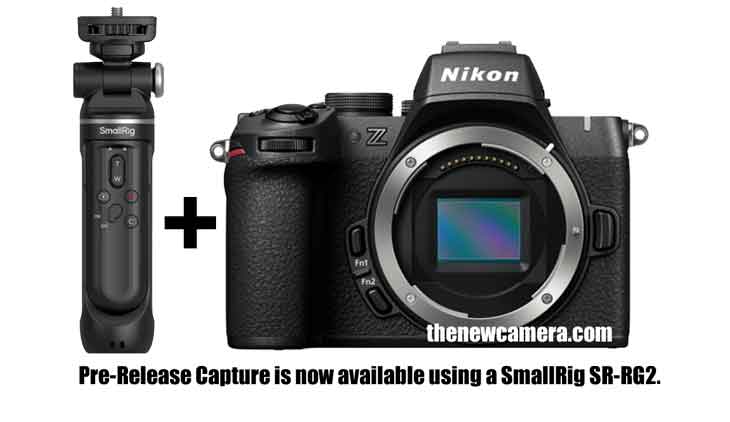
We all know that the Nikon Z50 II does have pre-release capture mode, but it doesn’t work well when you use the remote shutter of the Small Rig SR-RG2 Grip. Now with the latest update, Nikon now fixed the issue, and it will work in High Speed Frame Capture + Mode when paired with the SmallRig SR-RG2 Grip
Nikon Z50 II Firmware Update – Changes from “C” Firmware Version 1.00 to 1.01
- • Pre-Release Capture is now available using a SmallRig SR-RG2.
- • Added “русский” (Russian) to [Language] in [SETUP MENU] for Z50II cameras sold in the Middle East region.
- • Renamed d13 [Display on during burst] in [CUSTOM SETTINGS MENU].
- • Fixed the following issues.
- – In rare cases, the camera would stop responding when the camera was reconnected to SnapBridge after it was connected to Nikon Imaging Cloud while connecting to SnapBridge.
- – In synchronized release, pressing the shutter-release button of the master camera halfway initiated autofocus on the remote camera with the following setting selected.
- ▸ [CUSTOM SETTINGS MENU] > a6 [AF activation] > [AF-ON only]
Click here to download the update.
Follow us on our social pages FACEBOOK | TWITTER | INSTAGRAMto get live Camera News +Nikon Rumors 24X7
By admin, on December 6th, 2024
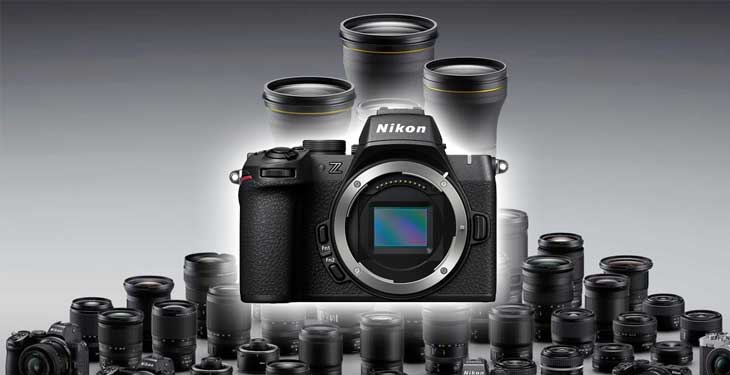
Let’s go to the best lenses for the Nikon Z50 Mark II camera, starting from the wide-angle lenses to primes and then telephoto primes. We will discuss each and every lens and their uses, so let’s begin the guide.
1. Wide-angle lenses for Vlogging and Photography
Travel Bloggers or Indoor Architecture Photographers
If you are a travel blogger or an indoor architecture photographer, you need an ultra-wide prime lens with a bright aperture that will allow you to produce exceptional-quality videos as well as images.
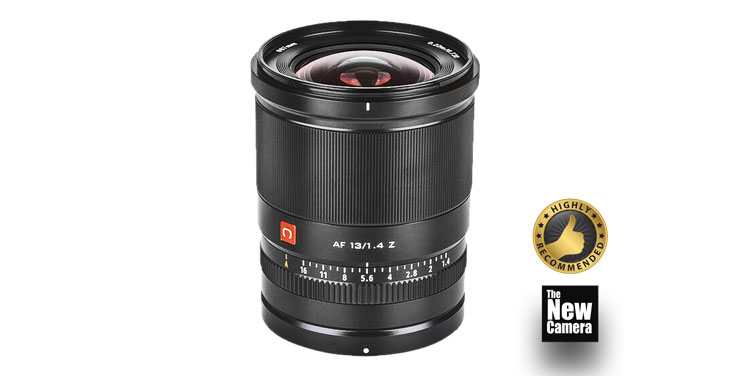
Best Lens for shooting handheld vlogs under any light | Also perfect for shooting landscape and architecture
Get Viltrox 13mm F1.4 Lens from B&H Store and Amaon.com
Viltrox 13mm f/1.4
One of the best ultra-wide prime lenses with the brightest aperture possible. This lens is highly recommended for travel vlogging or for those who want to capture an entire environment along with themselves. The f/1.4 bright aperture will allow you to capture ultra-low-light footage even in the darkest situations.
So, without a doubt, if you are a travel blogger or an architecture photographer who loves to grab ultra-wide indoor or outdoor architecture shots, the Viltrox 13mm f/1.4 is highly recommended for you.
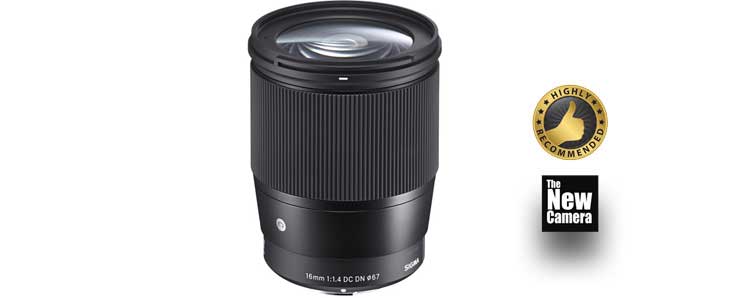
Get Sigma 16mm F1.4 Lens from Amazon.com and B&H Store
Sigma 16mm f/1.4
The Sigma 16mm f/1.4, which wasn’t available a year ago, is now an option.
This lens isn’t as ultra-wide as the Viltrox 13mm f/1.4. The 13mm is better when you want to showcase the entire environment along with yourself in a broader manner, despite the slight ultra-wide lens distortion. You can also use E-VR effectively.
However, if you are a daily life content creator or blogger who prefers an ultra-wide lens that captures in a proper manner without introducing much wide-angle distortion in video footage, then the Sigma 16mm f/1.4 is a great choice.
This lens is not only recommended for vlogging but also for creating talking-head videos by keeping your camera close to you. It is highly usable.
For photographers, this ultra-wide-angle lens, with its high-quality optics, can be used for astrophotography as well as capturing wide and vivid landscapes.
2. Street Photography, Vlogs & Portrait Lenses
Now let’s talk about the best lens for street photography — a perfect 35mm equivalent prime lens for your Nikon Z50 Mark II camera.
We have three different options for street photography, including one from Sigma.
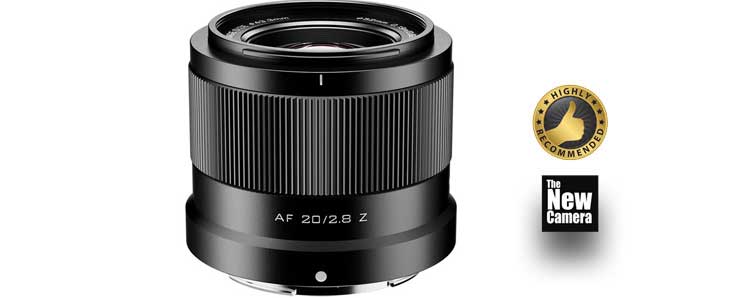
Get Viltrox 20mm F2.8 Z Mount Lens form B&H Store and Amazon.com
Viltrox 20mm f/2.8
If you love to shoot street photography on a budget, the Viltrox 20mm f/2.8 is highly recommended. Priced at just $158, it’s great in terms of budget and quality.
The 20mm lens is a full-frame lens, so you can use it later on with full-frame cameras. On the Nikon Z50 Mark II (with a 1.5x crop factor), the equivalent focal length is about 30mm. This makes it an excellent everyday street photography lens for most daylight shots.
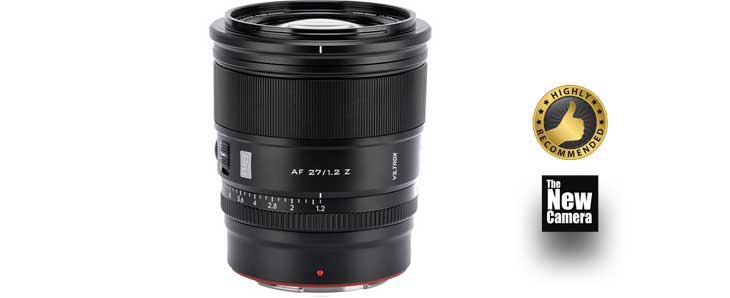
Get Viltrox 27mm F1.2 PRO Lens from Amazon.com and B&H Store
Viltrox 27mm f/1.2 PRO
If your budget allows, the Viltrox AF 27mm f/1.2 lens is one of the best lenses for street photography. With this lens, you will get a 40mm equivalent focal length on the Nikon Z50 Mark II, providing exceptional image quality with the brightest aperture in this range.
For daytime shots, dramatic effects can be achieved using the maximum f/1.2 aperture, though a neutral density (ND) filter may be required.
This lens is also suitable for creating talking-head videos with maximum depth of field.
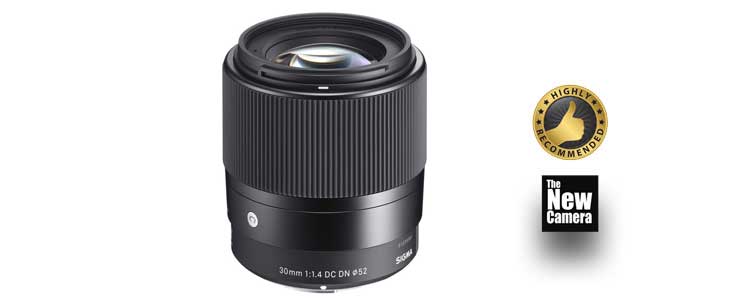
Get Sigma 30mm F1.4 Lens from B&H Store and Amazon.com
Sigma 30mm f/1.4
The Sigma 30mm f/1.4 is a popular lens among content creators and portrait shooters. On an APS-C format camera like the Nikon Z50 Mark II, it offers exceptional quality optics for professional portraits or street photography.
It is often referred to as the modern “nifty fifty.” If you’re a YouTube content creator, this is the best lens for talking-head videos, provided you maintain a 4 to 5-foot distance from the camera. Tight framing may occur if space is limited.
3. Wedding Photography Lenses
For wedding photographers, you need two types of lenses:
- A portrait prime lens for pre-wedding shoots and capturing candid moments.
- A coverage lens to document the entire event and rituals.
Portrait Lens for Weddings
The Sigma 30mm f/1.4, discussed earlier, is excellent for portraits and candids.
Coverage Lens for Weddings
In situations where the Sigma 18-50mm f/2.8 or the Tamron 17-70mm f/2.8 isn’t available for Nikon Z mount, the only viable option is:
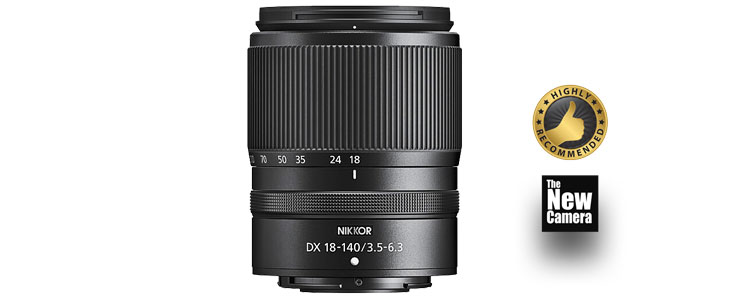
Best coverage lens for wedding photographers | Get 18-140mm Lens from Amazon.com | B&H store
Nikon Z DX 18-140mm f/3.5-6.3 VR
This is the best coverage lens currently available for the Nikon Z50 Mark II. It’s recommended for wedding photographers and travel enthusiasts who need an all-in-one zoom lens.
However, for cinematic videos, prime lenses are always preferred over zoom lenses with variable apertures.
As you all know, the Nikon Z50 Mark II camera now supports bird-eye autofocus tracking, animal-eye autofocus tracking, and 9 different types of autofocus subject tracking modes. So, this is a perfect camera to be used as wildlife photography gear after the Z6 Mark III camera in Nikon. So, let’s discuss the best available wildlife photography lenses for the Nikon Z50 Mark II camera.
4. Budget Wildlife Photography Lens
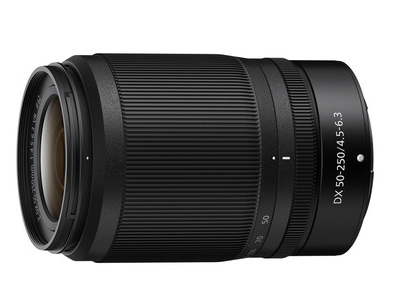
Get DX 50-250mm Lens from Amazon.com and B&H Store
The most affordable wildlife photography lens for beginners and entry-level users who don’t want to spend thousands of bucks on a lens should buy the DX 50-250mm f/4.5-6.3 VR lens.
This is a very small, lightweight, and sharp lens, handy for beginners. It also has a quiet and fast autofocus system.
Two Best Wildlife Photography Lenses Available at a Very Reasonable Price
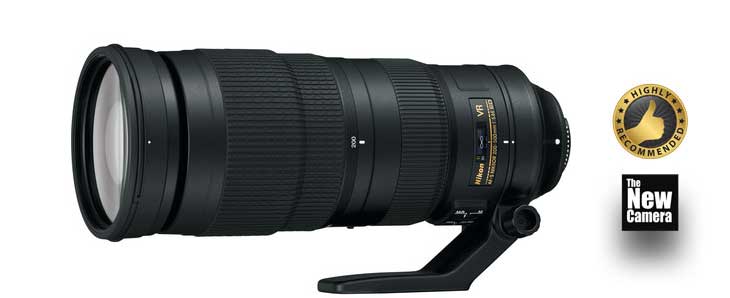
Get 200-500mm f/5.6E ED VR Lens B&H Store and Amazon.com
Nikon AF-S NIKKOR 200-500mm f/5.6E ED VR Lens
This lens is a DSLR lens and needs an FTZ adaptor to work with the Nikon Z50 Mark II camera.
This is one of the best budget wildlife photography lenses available, with such a high resolving capacity that it can even resolve the Z9 or Z8 40+ megapixel sensors.
Autofocus is really very fast and supports the latest generation eye autofocus tracking in mirrorless cameras. At the same time, you have a constant f/5.6 aperture throughout the zoom range.
This gives you an amazing creamy background blur if you shoot portraits at 200mm or 300mm with this lens.
I have also used the Tamron 150-500mm lens, but I was not satisfied with the optical performance I was getting with the Z-mount mirrorless lens made by Tamron. After using it for a while, I switched back to the AF-S 200-500mm with my Nikon ZF camera.
So, I will recommend this lens as one of the most budget-friendly wildlife photography lenses available, giving you 500mm reach. You can easily capture birds in flight at a very reasonable cost.
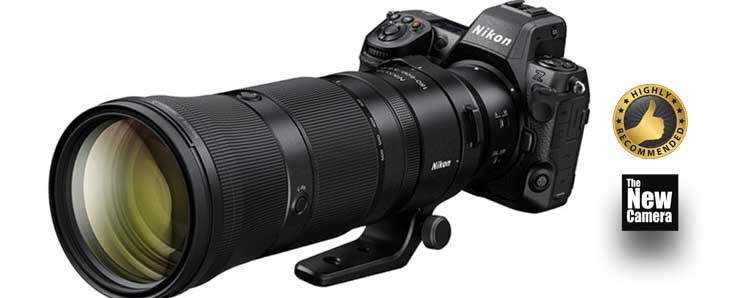
Get the 180-600mm lens B&H Store and Amazon.com
NIKKOR Z 180-600mm f/5.6-6.3 VR Lens
Another excellent lens we recommend is a mirrorless lens made by Nikon. Its optical performance is phenomenal, and you will never regret spending your bucks on this lens.
If your budget allows, this lens gives you 100mm more reach than the previous recommendation. The good thing is it is made for mirrorless cameras. Its autofocus motor has been optimized for both photography and videography use.
At the same time, the optical performance of this lens is top-class, and it provides clear shots even when hand-holding your camera, thanks to its highly effective optical image stabilization.
This particular lens is in such high demand right now that, at the time of writing this article, most units are out of stock in the retail stores I know in my personal hometown area.
If you can get this lens, it would be the best investment within the budget you’ve ever made for a wildlife photography lens.
Support us – Use or affiliate link Amazon.com | B&H Store for the next purchase u make – it helps us 🙂
By admin, on November 18th, 2024
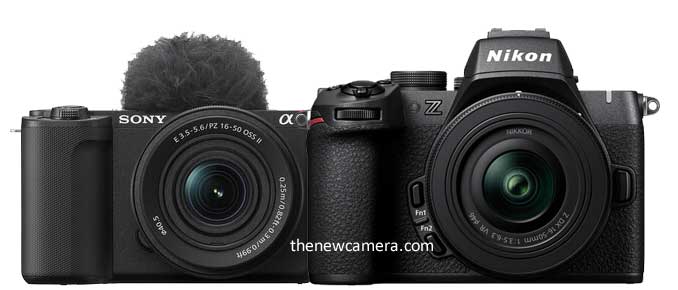
Let’s Compare the Sony ZV-E10 II and the Nikon Z50 II. The big question is, which one is better for your own personal requirements and your budget too? So, we are going to compare the major differences between the two, and you have to keep your requirements in mind. Every time we compare the major specs of the cameras, here we are also analyzing that particular spec in our conclusion and verdict part. Jump in and find out the best camera for you!
Nikon Z50 II vs Canon R10 | Nikon Z50 II vs Sony A6700
Design and Build
| Feature |
Nikon Z50 II |
Sony ZV-E10 II |
| Lens Mount |
Nikon Z |
Sony E |
| Body Material |
Magnesium Alloy |
Polycarbonate with Metal Components |
| Weight (With Battery) |
Approx. 450 g |
377 g |
| Dimensions (W x H x D) |
126.5 x 93.5 x 60 mm |
114.8 x 67.5 x 54.2 mm |
| Monitor Display |
3.2″ 1.04M-Dot Tilting Touchscreen LCD |
3.0″ 1.03M-Dot Articulating Touchscreen LCD |
| Viewfinder |
0.39″ OLED, 2.36M-Dot, 100% coverage |
No Viewfinder |
| Weather-Sealing |
Yes |
No |
| Built-In ND Filter |
No |
No |
| Hot Shoe Mount |
Yes |
Yes (Multi-Interface Shoe for Accessories) |
Design – Compact Creator vs Rugged Explore
These two cameras are completely different specifically design-wise. The Sony ZV-E10 Mark II camera does have a small hand grip for shooting occasionally, but as we know since it belongs to the SONY ZV Series has been designed for content creation and cinematography. It has an ultra-compact body with fewer controls. The camera also doesn’t have any weather sealing over it neither the EVF.
The Nikon Z50 Mark II HYBRID camera has an electronic viewfinder with 1000 nits brightness. It also has a very deep and redesigned hand grip, even better than its predecessor. At the same time, the body is weather-sealed, so you can shoot in uncontrolled light environments without any issues.
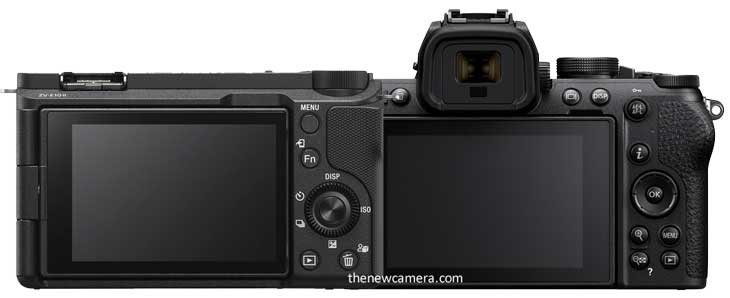
Best Camera as per Design Conclusion / Verdict
For portability, flexibility, and easier controls, the Sony ZV-E10 II leads. Again, for durability, extensive manual controls, and outdoor adventure, it is recommended to use the Nikon Z50 II camera.
Imaging Capabilities
| Feature |
Nikon Z50 II |
Sony ZV-E10 II |
| Sensor Type and Size |
APS-C CMOS, 23.5 x 15.7 mm |
APS-C CMOS, 23.3 x 15.5 mm |
| Resolution |
20.9 MP |
26 MP |
| ISO Sensitivity (Photo) |
100-51,200 (Expandable to 204,800) |
100-32,000 (Expandable to 50-102,400) |
| Continuous Shooting Speed |
11 fps 200 RAW/ 15 fps / 30 Fps Jpeg |
Up to 11 fps for 59 RAW / 1000 JPEG Frames |
| Autofocus Points (Photo) |
209 Phase-Detection Points |
759 Phase-Detection Points |
| Low-Light AF Sensitivity |
-9 EV |
-3 EV |
| Image Stabilization |
VR for Video only |
Digital + GYRO (Video Only) |
| Aspect Ratios Available |
3:2, 16:9 |
3:2, 16:9 |
| Image File Formats |
JPEG, NEF (RAW) |
JPEG, HEIF, Raw |
High Resolution vs Low Light Sensitivity
As we know, the Sony ZV-E10 II camera features a 26-megapixel CMOS sensor, while the Nikon Z50 II has a 20.9-megapixel sensor. Due to the resolution difference, the Sony ZV-E10 II camera captures more detail at the base ISO range starting from ISO 100-400, and it’s more recommended for landscape photography, portraits, and product shots where one wants to harness the maximum amount of detail possible from a camera.
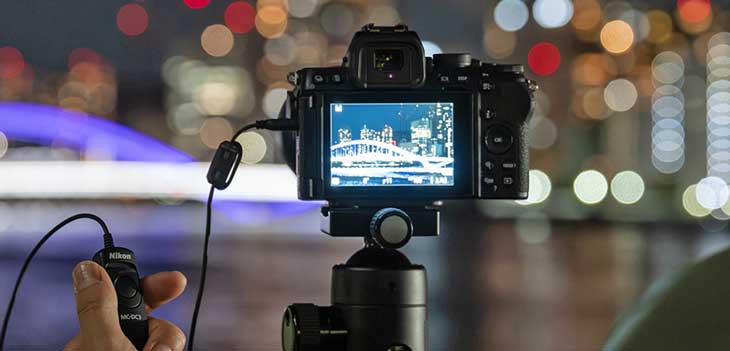
On the other hand, we have the Nikon Z50 II camera with a 20.9-megapixel sensor. Due to the lower resolution, we have large photodiodes inside this camera, which enables more incoming light to be absorbed, resulting in cleaner images at higher ISOs. For example, if you are shooting at ISO 1600 or 3200, the Z50 II camera will provide you with cleaner images compared to he compatitor.
Sensor Image Quality – Conclusion / Verdict
When shooting in uncontrolled light environments, it is highly recommended that you get the Nikon Z50 II camera, specifically when you are shooting wildlife where your subject can be at any place or time, then it’s recommended to have cameras like Z50 II that can capture better details or images at higher ISO ranges.
Autofocus: AI Precision vs Autofocus Consistency
Sony ZV-E10 II camera features 759 phase-detection autofocus points. Not only does the number of autofocus points matter, but the autofocus algorithm of the Sony ZV-E10 II camera is powered by an advanced AI AF algorithm, so it enhances the overall autofocus experience 2x better than what it was in the Sony A6400 camera.
And Nikon Z50 Mark II also arrives with an upgraded autofocus system. As per Nikon’s press text, the Z50 Mark II camera uses the same autofocus algorithm that we have seen in the Nikon Z8 camera. Having said that, it’s a major improvement in Nikon APS-C lineup, and without a doubt, you can feel it. For example, even at 30 frames per second when you are using Nikon Z50 II at C30 mode, the camera does autofocus and auto-exposure calculation in every frame. That is a clear indication of how fast the Z50 Mark II autofocus calculation has now become.
The good thing about Nikon Z50 Mark II is, apart from improved autofocus modes, the camera does autofocus sensitivity up to -9 EV, whereas in Sony it’s limited to -3 to -4 EV depending upon the type of lenses you are using in both the cameras.
30 FPS Continuous shooting speed, the Nikon Z50 II camera features continuous shooting upto 30 FPS as well as Pre-Brust modes of 0.35ses, .05 Ses, and 1.0 Sec that captures a MAX of 30 Jpegs before you hit the shutter, one of the only cameras that offer pre-burst mode in this price segment.
Best AutoFocus – Conclusion / Verdict
Now, even though the Z50 II autofocus is much improved, for action-packed VIDEOS, it is highly recommended to use the Sony ZV-E10 Mark II camera 😉 . But for shooting action-packed images at higher frame rates, Z50 is the best option where you have multiple options like shooting with a mechanical shutter or electronic, at the very same time, the camera does autofocus and auto-exposure calculation all the way, even at 30 fps. That’s the Nikon Z50 II recommended for shooting action-packed images when we have these two options in front.
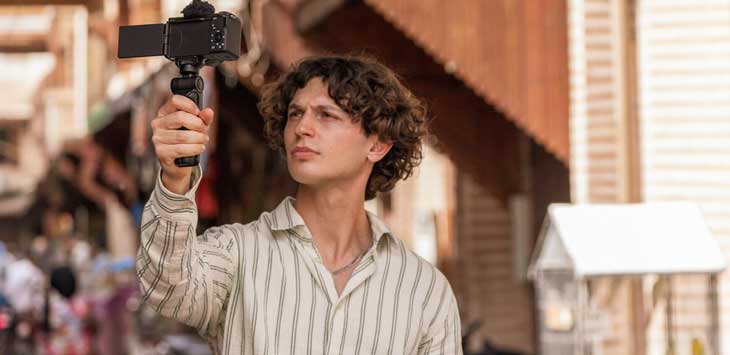
Electronic Stabilization vs Gyro
None of the cameras has Sensor-Shift IS [No Mechnical], The Sony ZV-E10 II camera uses GYRO which also includes active image stabilization. The Active IS works flawlessly but needs wide lenses to crop and apply the steb. If you have that much wider better to use GYRO. Nikon Z50 Mark II camera uses electronic stabilization in video mode [E-VR], which is of course not as good as we have in the Sony ZV-E10 II, but yeah, it is effective to some extent.
Best Camera for Handheld Shooting – Conclusion / Verdict
Since none of them have any kind of mechanical stabilization inside them, and if you talk about electronic image stabilization, then Sony excels while using the active mode as well as an option to use gyro-based image stabilization.
Video Capabilities
| Feature |
Nikon Z50 II |
Sony ZV-E10 II |
| Internal Recording Modes |
H.264/H.265 8/10-Bit |
XAVC HS/S 4:2:2 10-Bit, XAVC S 8-Bit, XAVC S-I 10-Bit |
Max 4K Res.
|
UHD 4K 60p 1.5X Crop |
UHD 4K 60p 1.04X Crop |
| High-Speed Recording |
1920 x 1080 up to 120 fps |
1080p up to 240 fps |
| Recording Limit |
Approx. 121 mins |
No recording limit |
| Gamma Profiles |
N Log |
S-Cinetone, S-Log3 |
Luts
|
RED-Luts |
Picture Profiles |
| Built-In Microphone |
Mono |
Stereo |
| Audio Inputs and Outputs |
Microphone and Headphone |
Microphone input, Headphone output |
| Focus Points (Video) |
209 Phase-Detection Points |
495 Phase-Detection Points |
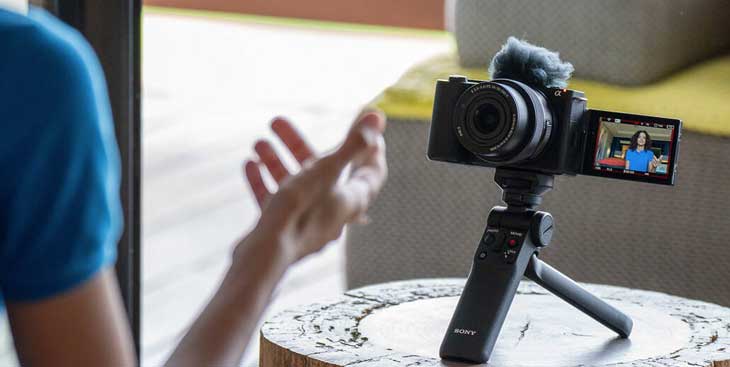
Color Science: Grading Playground vs. Ready-to-Use Output
Sony ZV-E10 II camera is built for cinematic video and content creation purposes. It supports 4K video recording up to 60 frames per second with a negligible crop of 1.03x. At the same time, you can record your videos in 10-bit 4:2:2 internally. It also supports professional-grade S-Log3 and S-Cinetone, which professionals generally prefer to use.
The Sony ZV-E10 II camera also features a gyro-based image stabilization system backed by Active Mode, so depending on the type of lens you have, you can utilize any of these image stabilization methods.
Yes, we do have Product Showcase Mode and Active Framing, ideal for content creators shooting solo content. Additionally, the battery life and ultra-compact body make it highly portable.

Nikon Z50 II camera features 4K 60p recording with a 1.5x crop, which may or may not suit many professionals out there. However, the good news is that the Nikon Z50 II features natural color science, inspired by RED camera makers. The RED-like color science is now available in the Z50 II camera. Additionally, the camera also supports waveform function, which professionals will love.
If you make talking-head videos while sitting in your room, you can use the newly developed Product Review Mode or Product Showcase Mode of the Nikon camera. However, the image stabilization is not as effective as that of Sony’s.
If you’re a professional cinematographer, short filmmaker, or story trailer, you’ll appreciate the RED-like color science present in the Z50 II. Despite the crop in 4K 60p, if you’re okay with it, you’ll benefit from waveform support, which is highly essential for professional storytelling.
The Sony ZV-E10 II camera, designed for video creation, includes all the bells and whistles you’d wish for in a professional video camera.
Power and Connectivity
| Feature |
Nikon Z50 II |
Sony ZV-E10 II |
| Battery Type |
EN-EL25a, Approx. 320 Shots |
NP-FZ100, Approx. 610 Shots |
| USB-C for Power/Charging |
Yes |
Yes |
| Media/Memory Card Slot |
Single SD Slot (UHS-II) |
Single SD Slot (UHS-II) |
| Wireless |
Wi-Fi, Bluetooth |
Wi-Fi (2.4/5 GHz), Bluetooth 4.2 |
| Mobile App Compatibility |
SnapBridge |
Creators’ App (Android & iOS) |
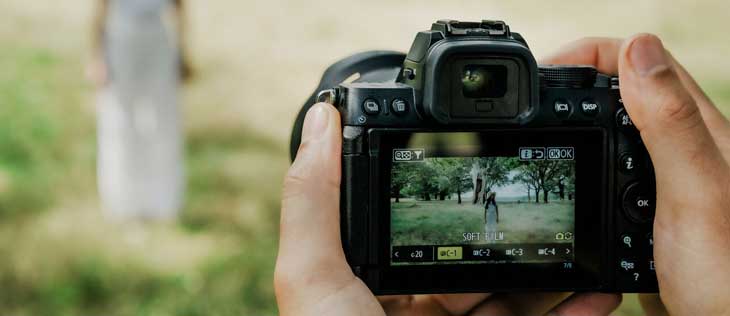
Nikon Z50 Mark II: Weather-Sealed BODY and Low-Light Sensor
In conclusion, the Sony ZV-E10 II camera and the Nikon Z50 Mark 2 camera are made for different types of users. If you look carefully, without a doubt, the Nikon Z50 Mark 2 camera has been made with a deep hand grip, EVF and a rugged body. The camera also features excellent low-light performance with its 20.9 MP sensor and, without the option of an optical low-pass filter, it captures decent images at base ISO. This makes it an ideal camera for wildlife photography, event photography, and even travel photography where you have a completely uncontrolled set of environments and lights.
Sony ZV-E10 II: Best for HANDHELD Content Creators
The Sony ZV-E10 II camera is a content creator’s powerhouse that offers 4K 60 FPS recording, which is almost uncropped since it has only a 1.03x crop, which is unnoticeable. You can record 10-bit videos internally, powered by S-Log3 and S-Cinetone. One of the best things about the Sony camera is that you are getting active image stabilization backed by gyro-based stabilization, ideal for those who love to shoot their content on the go. It will provide completely stable, high-quality footage. Additional features include product showcase mode, active framing, and a three-capsule microphone to record high-quality audio directly in the camera. More or less, it is highly recommended for content creators.
Sony ZV-E10 II: For Photography?
Yes, you can occasionally use the ZV-E10 II camera for photography purposes to get a resolution advantage, but it is highly recommended that you use this camera with proper lighting conditions to extract the maximum amount of detail possible.
Nikon Z50 Mark II: Cinematographers and StoryTellers
The Nikon Z50 Mark II camera does have some exceptional advantages in video recording modes that should not be overlooked. It captures clean and noise-free videos at higher ISO levels and has been inspired by RED cinema profiles. Moreover, it also features waveform capability with a weather-sealed body. So if you are a short film storyteller or beginner cinematographer, you should consider these factors before getting your first camera for professional cinematography purposes.
Sony ZV-E10 II from B&H Store | Amazon.com
Sony ZV-E10 II Recommended for:
- Casual Clicks
- Wedding Video
- Vlogging / YouTube Content Creation
- Solo Content Creation (Active Framing & Product Showcase Mode)
- Cinematic SOLO Videography (with S-Log3 & S-Cinetone)
- Casual Travel Videography
- Compact, On-the-Go Shooting
Get a Nikon Z50 Mark II camera from the B&H Store | Amazon.com
Nikon Z50 II Recommended for:
- Low-Light Photography
- Wildlife Photography
- Wedding Photography
- Event Photography (due to clean high ISO performance)
- Documentary Videography
- Cinematic Filmmaking (low light, RED-inspired color science)
- Rugged Outdoor Photography (weather-sealed body)
- Travel Photography in Challenging Environments
- High ISO Videography
- Professional Video Shoots (Waveform & RED LUTs)
Support us – Use or affiliate link Amazon.com | B&H Store for the next purchase u make – it helps us 🙂
Follow us on our social pages FACEBOOK | TWITTER | INSTAGRAM to get live Camera News +
By admin, on November 12th, 2024
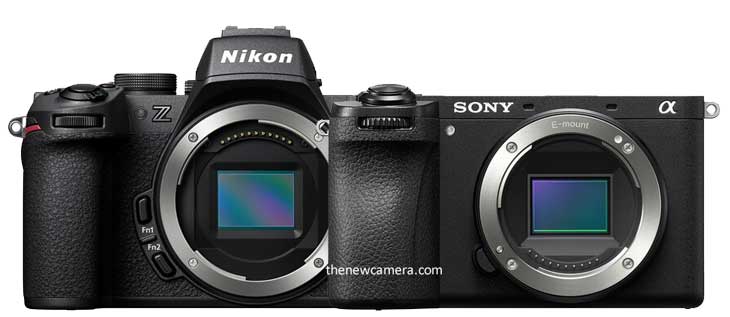
Which camera is better for capturing images or recording content, the Nikon Z50 II or the Sony A6700? In this specification comparison, we will focus on the major differences between these two cameras. Besides the key feature differences, these cameras also vary in price, so when selecting your camera, consider all these factors before making a purchase.
Initially, in the design part, one thing I like about the Sony A6700 camera is its larger battery life. The Sony A6700 uses an NP-FZ100 battery, so you get approximately 2x battery life compared to the Nikon Z50 Mark II camera. However, the Z50 II has an upgraded Bluetooth antenna, which allows for faster transfer speeds. Another good feature introduced in the Z50 II is the silent transfer mode, enabling you to use your camera for shooting or capturing video while it silently transfers your images or videos in the background to your smartphone or PC. Although there aren’t many differences in the design patterns, both cameras are highly usable for photographers and content creators in terms of design and build
Nikon Z50 II vs Canon R10
Table 1: Design Comparison
| Feature |
Nikon Z50 II |
Sony A6700 |
| Lens Mount |
Nikon Z |
Sony E |
| Body Dimensions (W x H x D) |
5 x 3.8 x 2.6 in (127 x 96.8 x 66.5 mm) |
4.8 x 2.7 x 3 in (122 x 69 x 75.1 mm) |
| Weight |
17.46 oz / 495 g (Body Only) |
1.1 lb / 493 g (With Battery, Recording Media) |
| Material |
Magnesium Alloy |
Magnesium Alloy |
| Battery Type |
EN-EL25a or EN-EL25 (Approx. 230 Shots) |
NP-FZ100 (Approx. 550 Shots) |
| Weather-Sealing |
Yes |
Yes |
| Operating Temperature |
32 to 104°F / 0 to 40°C |
32 to 104°F / 0 to 40°C |
| Connectivity Ports |
USB-C (Power/Data), Micro-HDMI, 3.5 mm Mic & Headphone Jacks |
USB-C (Power/Data), Micro-HDMI, 3.5 mm Mic & Headphone Jacks |
| Memory Card Slot |
Single SD/SDHC/SDXC (UHS-II) |
Single SD/SDHC/SDXC (UHS-II) |
| Wireless |
Wi-Fi 5, Bluetooth 5.0 |
Wi-Fi 5 (2.4/5 GHz), Bluetooth 4.2 |
| GPS |
Via Connected Smartphone |
Via Connected Smartphone |
In the imaging comparison, we have compared the two different sensors and their specs. The big advantage of the Nikon Z50 II camera’s sensor—and a major reason why Nikon continues using it in their mirrorless lineup—is its strong low-light performance. The sensor pixel area is larger than that of the A6700, so even without optical stabilization, it captures more detail in low-light environments. Additionally, the Z50 II has an expanded ISO range that offers one more stop than the A6700. With these core differences, it’s clear that the Nikon Z50 II will perform better in low-light or uncontrolled lighting environments compared to the A6700.
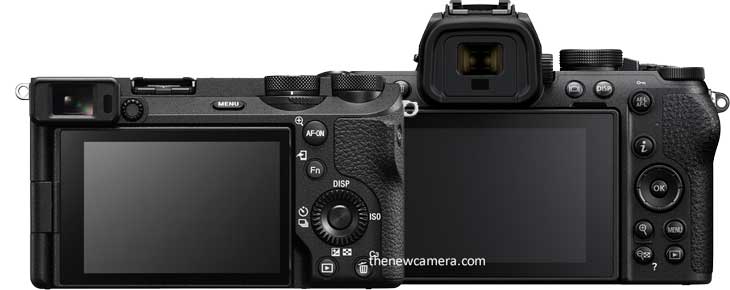
Resolution Advantage of Sony A6700:
Now, with the Sony A6700 camera, we are getting a resolution advantage, but will it work in actual conditions? We will test and find out that capturing images near the base ISO range will bring more details from Sony with OLPF or with a 20.9 MP sensor without OLPF (Optical low-pass filter).
Table 2: Imaging Comparison
| Feature |
Nikon Z50 II |
Sony A6700 |
| Sensor Resolution |
Actual: 21.51 MP, Effective: 20.9 MP (5568 x 3712) |
Actual: 27 MP, Effective: 26 MP (6192 x 4128) |
| Sensor Type |
APS-C CMOS, 23.5 x 15.7 mm |
APS-C CMOS, 23.3 x 15.5 mm |
Sensor Pixel Area
|
4.22µ |
3.76µ |
Low pass Fiter
|
No |
Yes |
| Sensor Crop Factor |
1.5x, 1.2x in some video modes |
1.5x, 1.6x in some video modes |
| Image Stabilization |
Digital (Video Only) |
Sensor-Shift, 5-Axis |
| ISO Range (Photo) |
100 to 51,200 (Expandable: 100 to 204,800) |
100 to 32,000 (Extended: 50 to 102,400) |
| ISO Range (Video) |
100 to 25,600 |
100 to 32,000 |
| Continuous Shooting Speed |
Up to 11 fps (Raw) / 30 fps (JPEG) |
Up to 11 fps (26 MP) |
Pre- burst
|
Yes |
No |
| White Balance Range |
2500 to 10,000K |
2500 to 9900K |
| Autofocus Points |
231 Phase & Contrast Detection |
759 Phase Detection (Photo), 495 (Video) |
| AF Sensitivity |
-9 to +19 EV |
-3 to +20 EV |
| Image File Format |
HEIF, JPEG, Raw |
HEIF, JPEG, Raw |
| Aspect Ratio Options |
3:2, 1:1, 16:9 |
3:2, 4:3, 16:9, 1:1 |
| Bit Depth |
14-Bit |
14-Bit |
Continuous Shooting Speed:
Another significant difference is continuous shooting speed. Both cameras feature up to 11 fps with their mechanical shutters, but Nikon allows up to 30 fps with its electronic shutter. And in A6700 we don’t have the support of an Electronic shutter in Brust mode, so the maximum speed we are getting in A6700 is 11 Fps.
Buffer Memory and Pre-Burst Capture Mode:
Comparing buffer memory, the Z50 II can store up to 200 RAW files in a single shot, whereas the A6700 can store approximately 50. Now with the help of Pre Brust capture mode feature in the Z50 II is that it engages its buffer memory before shooting starts. This means that when you capture an image, the camera saves a stack of images even before the shutter is pressed, ensuring you don’t miss key moments.
Low-Light Autofocus Sensitivity:
Another strength is the Z50 II’s low-light AF sensitivity, which reaches -9 EV, compared to -3 EV on the Sony A6700.
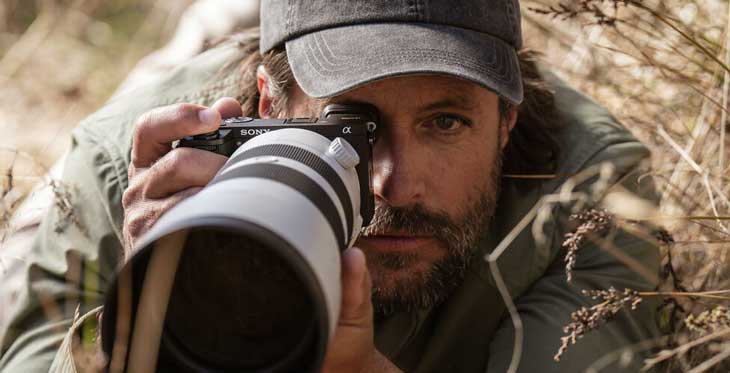
Autofocus System:
The Sony A6700 has 759 phase-detect AF points for autofocus, while the Z50 II is limited to 231 points. This gives the A6700 a more advanced autofocus system, but Nikon has closed the gap by introducing similar AF algorithms to those seen in the Nikon Z8. So, while Sony may still have the edge in AF, the Z50 II’s performance now comes very close.
Image Stabilization
Sony A6700 camera features sensor-shift Image stabilization as well as GYRO, so if you are shooting still images of video the Sony A6700 camera is more helpful to you compared to Nikon Z50 II without IBIS and normal E- VR mode.
Best Camera for Different Environments:
So, if you’re working in a controlled lighting environment, the Sony A6700 may be more useful. However, if you’re often in uncontrolled or outdoor environments—like wildlife photography where lighting and subject positions vary—then a camera that performs better in low-light conditions may be preferable, making the Z50 II a better choice.
Table 3: Video Comparison
| Feature |
Nikon Z50 II |
Sony A6700 |
| Internal Recording Modes |
H.264/H.265 8/10-Bit |
XAVC HS/S 4:2:2 10-Bit, XAVC S 8-Bit, XAVC S-I 10-Bit |
| Max Resolution & Frame Rate |
UHD 4K 30p Uncropped |
UHD 4K 30p Uncropped |
| |
UHD 4K 60p 1.5X Crop |
UHD 4K 60p 1.04X Crop |
| |
NA |
UHD 4k 120p 1.58x crop |
| High-Speed Recording |
1920 x 1080 up to 120 fps |
1080p up to 240 fps |
| External Recording |
HDMI 4K (Unspecified Frame Rate) |
HDMI 4K at up to 59.94 fps, HD up to 59.94 fps |
| Slow/Fast Motion |
Slow Motion Only |
Yes |
| Recording Limit |
Up to 125 Minutes |
Unlimited |
| Gamma Curve |
HDR-HLG, Nikon N-Log |
HDR-HLG, S Cinetone, S-Log 3 |
Waveform
|
Yes |
No |
Product showcase Mode
|
Yes |
Yes |
Auto Framing
|
No |
Yes |
| Built-In Microphone |
Stereo |
Stereo |
Image Stabilization
|
VR |
IBIS / GYRO |
| Audio Recording Format |
MOV: 24-Bit 48 kHz LPCM, MP4: 16-Bit 48 kHz AAC |
XAVC: 2-Channel 16-Bit 48 kHz LPCM |
| Headphone & Mic Jacks |
Yes (3.5 mm) |
Yes (3.5 mm) |
| Video I/O |
Micro-HDMI |
Micro-HDMI |
This side-by-side comparison should help you see each camera’s strengths and features in detail. Now its time for a recommendation
Sony A6700: Higher Frame Rates and Minimal Crop in 4K
In the video comparison tables above clearly shows that with the Sony A6700 camera, we are getting higher frame rates up to 120 fps in 4K. Although we have to face significant crop in that mode, at the same time, in the Nikon Z50 Mark II camera, even at 4K 60 fps, we have to face a 1.5X crop, whereas in the Sony A6700 camera, the crop at 4K 60p is minimal, at only 1.04x. So more or less, if we talk about the usability of frame rates, we are getting more advanced specifications in the Sony A6700 camera.
Sony A6700: Superior Gyro-Based Image Stabilization for On-the-Go Shooting
Another significant advantage of the Sony A6700 camera is the presence of a gyro-based image stabilization system, so if you are hand-holding the camera and creating content on the go, then the most suitable camera for you is again the Sony A6700 camera.
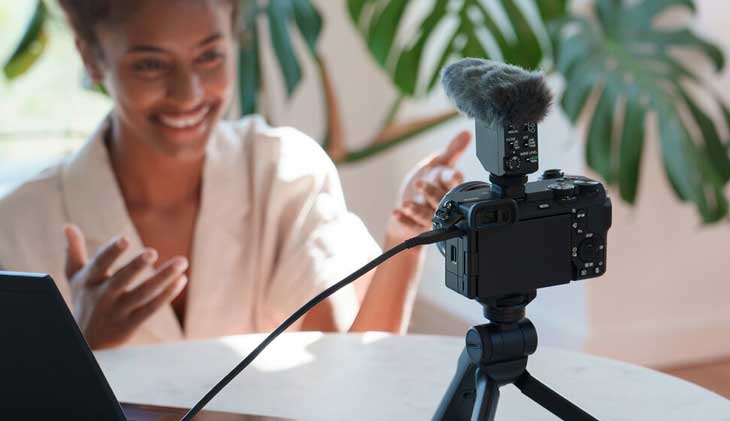
Sony A6700: High Frame Rate Options for Slow-Motion and Content Creation
Again, for dance videos or creating reels that need higher frame rates, the Sony A6700 camera allows you to capture full HD videos up to 240 fps for creating super slow-motion videos. So if you talk about frame rates or gyro-based image stabilization, you are getting all that in the Sony A6700 camera, which also supports 10-bit internal recording with S-Log2, S-Log3, and Hybrid Log Gamma, so you can extract as much detail as you require for a given scene.

Nikon Z50 II: Exceptional Low-Light Performance and Professional Cinematography Features
Now, when should you buy the Nikon Z50 Mark II camera? Since the Nikon Z50 II camera features an ultra-low-light-sensitive sensor, if you are a short filmmaker and need a camera that performs exceptionally well under uncontrolled lighting conditions along with support for professional cinematography using RAW LUTs that the camera includes, then new RAW LUTs with the Z50 II camera may be added with updates in the future. Above all, you are also getting waveform support that will help you precisely control exposure, allowing you to rearrange elements to achieve optimal exposure. So if you are professionally involved in creating short films under uncontrolled lighting conditions, then the most recommended camera is the Nikon Z50 II.
Get a Sony A6700 Camera from B&H Store and Amazon.com
Sony A6700 Recommended for:
- Portrait Photography
- Landscape Photography
- Street Photography
- Event Photography
- Sports Photography
- Vlogging
- YouTube Content Creation
- Product Photography
- Cinematic Videography (with high frame rates)
- Casual Travel Videography
- Action/Adventure Videography
Get a Nikon Z50 Mark II camera from the B&H Store | Amazon.com
Nikon Z50 II Recommended for:
- Low-Light Photography
- Wildlife Photography
- Documentary Videography
- Cinematic Filmmaking (low light)
Support us – Use or affiliate link Amazon.com | B&H Store for the next purchase u make – it helps us 🙂
Follow us on our social pages FACEBOOK | TWITTER | INSTAGRAM to get live Camera News +
By admin, on November 9th, 2024
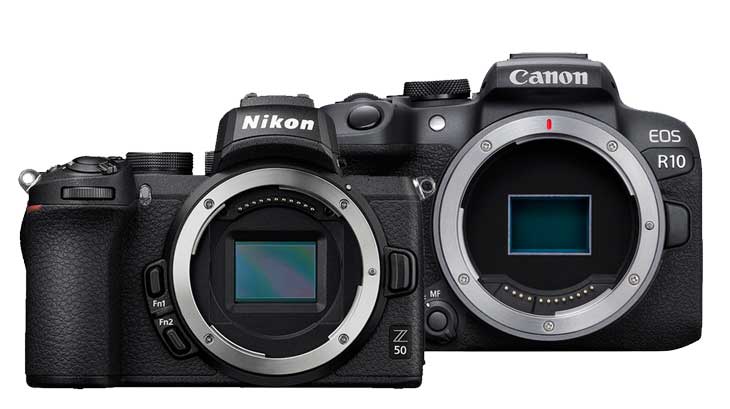
Let us compare the Nikon Z50 II with the Canon R10 camera. Let’s explore the main differences between these two cameras and find out which one is the best for photographers and which one is best for shooting videos. In the comparison table below, we have highlighted the differences in design, and we have created two separate tables dedicated to photography and videography features. So let’s find out the best camera between these two for your specific needs and budget.
1. Design Comparison
| Feature |
Nikon Z50 II |
Canon R10 |
| Body Dimensions |
5 x 3.8 x 2.6″ / 127 x 96.8 x 66.5 mm |
4.8 x 3.5 x 3.3″ / 122.5 x 87.8 x 83.4 mm |
| Weight |
495 g (Body Only) |
382.2 g (Body Only) |
| Lens Mount |
Nikon Z |
Canon RF |
| Display |
3.2″ Tilting Touchscreen LCD, 1,040,000 Dot |
3.0″ Free-Angle Tilting Touchscreen LCD, 1,040,000 Dot |
| EVF Type |
Built-In Electronic (OLED), 0.39″, 2,360,000 Dot – 1000 NITS Brightness |
Built-In Electronic (OLED), 2,360,000 Dot |
| Battery Type |
EN-EL25a or EN-EL25, approx. 230 shots |
LP-E17, approx. 430 shots |
| Ports |
USB-C Data & Power, Micro-HDMI, Mic & Headphone Jacks |
USB-C, Micro-HDMI, Mic Jack |
| Available Lenses |
Nikon Z DX and FX lenses |
Canon RF-S and RF lenses |
2. Photographic Feature Comparison
| Feature |
Nikon Z50 II |
Canon R10 |
Sensor Type
|
BSI CMOS |
FSI CMOS |
| Sensor Size |
23.5 x 15.7 mm (APS-C) |
22.3 x 14.9 mm (APS-C) |
| Effective Resolution |
20.9 Megapixel |
24.2 Megapixel |
| ISO Range (Photo) |
100 to 51,200 (Extended: 100 to 204,800) |
100 to 32,000 (Extended: 100 to 51,200) |
| Shutter Type |
Mechanical Focal Plane, Electronic Rolling |
Mechanical, Electronic Rolling |
| Shutter Speed (Mechanical) |
1/4000 to 900 sec |
1/4000 to 30 sec |
| Bulb Mode |
Yes |
Yes |
| Continuous Shooting (Mech) |
Up to 11 fps at 20.9 MP |
Up to 15 fps at 24.2 MP |
| Continuous Shooting (Elec) |
Up to 30 fps at 20.9 MP (JPEG) |
Up to 23 fps at 24.2 MP |
Pre-Capture Mode
|
1 Sec |
0.5 Sec |
| Autofocus Points |
231 (Phase & Contrast Detection) |
651 (Phase Detection Zones) |
| AF Sensitivity |
-9 to +19 EV |
-4 to +20 EV |
| AF Modes |
Continuous-Servo AF, Full-Time AF, Manual, Single-Servo AF |
Continuous-Servo AF, Manual, Single-Servo AF |
Weather sealed
|
Yes |
No |
Battery Life
|
250 Shots |
450 Shots |
3. Video Comparison
| Feature |
Nikon Z50 II |
Canon R10 |
| Sensor Type |
BSI CMOS |
FSI CMOS |
| Video Resolution & Frame Rates |
UHD 4K (30 fps) Uncropped |
UHD 4K (30 fps) Uncropped |
4k 60 FPS
|
1.5X Cropped |
1.5x Cropped |
Full HD Max Frame rate
|
120 FPS |
100 FPS |
Product showcase mode
|
Yes |
No |
| Video Stabilization |
Digital (Video Only) |
Digital (Video Only) |
| Internal Recording Codec |
H.264/H.265 (8/10-Bit) |
H.264 MP4 4:2:0 8-Bit, H.265 MP4 4:2:2 10-Bit |
| External Recording Codec |
HDMI 4K |
HDMI 1080p |
| HDR/LOG Support |
HDR-HLG, Nikon N-Log |
HDR-PQ |
Support RAW Video
|
Yes, N-Log available |
No, C-Log isn’t there |
| Recording Limit |
Up to 125 minutes |
Upto 120 Mins |
| Audio Recording |
Stereo, 24-Bit 48 kHz LPCM or 16-Bit AAC |
Stereo, 2-Channel AAC |
Conclusion Verdict
The Nikon Z50 II camera now has much-improved autofocus and also a low-light sensor, which helps to extract the maximum amount of detail possible in uncontrolled lighting environments or in any outdoor location. For wedding and event photography, we recommend you to go with Nikon Z50 II
Now, for sports and wildlife, it depends on which camera you like to buy since both are very capable. But again, due to the presence of a BSI CMOS sensor, the Z50 Mark II camera will perform better in uncontrolled lighting environments, specifically when you are using this camera for wildlife or bird photography. However, for sports events, you can take the Canon R10 with you when there is no big issue with light, as sports events generally happen during daylight. So, you may utilize the R10, and also, in sports events, you may require more reliable autofocus tracking, which is present in the Canon R10 alongside its slightly faster 15 fps mechanical shutter.
For day-to-day usage and street photography, I am going to recommend the Nikon Z50 Mark II camera. Due to the nature of its sensor and construction, the camera is able to capture clear shots and also has high low-light autofocus sensitivity compared to the R10. So more or less, for uncontrolled lighting environments of any type, the Nikon Z50 Mark II is more recommended. 165
Get a Nikon Z50 Mark II camera from the B&H Store | Amazon.com
Canon R10 – Camera body $879 [B&H Store] [Amazon.com] |
| Type of Photography/Video |
Recommended Camera |
| Wedding and Event Photography |
Nikon Z50 II
Due to its improved autofocus, low-light sensor, and availability of third-large amount party lenses , we recommend you to go with Nikon Z50 II |
| Wildlife and Bird Photography |
Nikon Z50 II
The BSI CMOS sensor in the Z50 II performs well in low-light and uncontrolled lighting, which is often required in wildlife photography. + You get AF sensitivity down to – 9 FV and upscaled 3d AI AF tracking. |
| Sports Photography (Daylight Events) |
Canon R10
Reliable autofocus tracking and slightly faster 15 fps mechanical shutter make the R10 a strong choice for sports events in daylight conditions. |
| Everyday Use and Street Photography |
Nikon Z50 II
Excellent low-light autofocus sensitivity and sensor design allow the Z50 II to capture clear shots in diverse lighting, making it versatile for daily use. |
| General Video Needs |
Canon R10 (for daylight, faster autofocus)
OR Nikon Z50 II (for low-light video) |
Nikon Z50 II Image Quality Test
Nikon Z30 / Zfc Image samples have been taken here since Nikon Z50 II and Zfc, both of them share the same sensor, so image quality is expected to remain exactly same as of the Nikon Z50 Mark II. Image credit dpreview.com
In the Image below we have compared the Nikon Z30 vs Canon R10 Images at ISO 25600, in RAW mode, as you can see the details are much preserved in Nikon Z50 II file
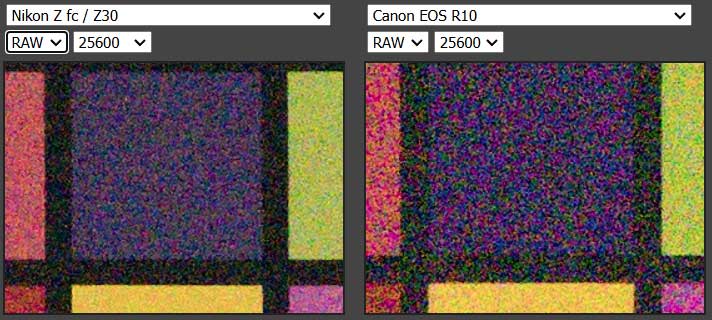
Next comparison Even in the JPEG comparison below you can see that Nikon is preserving more details compared to the Canon R10 FSI CMOS sensor.
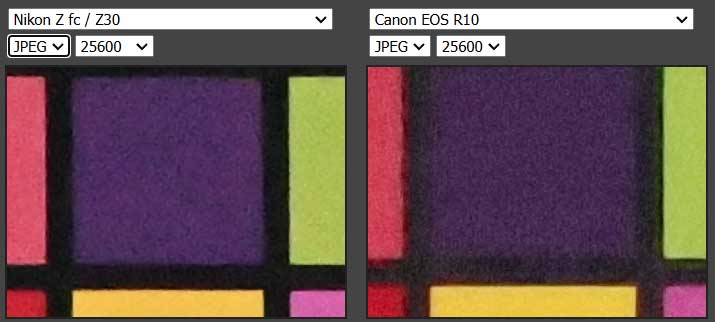
During the base ISO test we can see the letters in the Nikon Z50 II are more clearly visible than those of the Canon R10, despite having higher resolution Canon isn’t able to extract the amount of details they should at the base ISO range
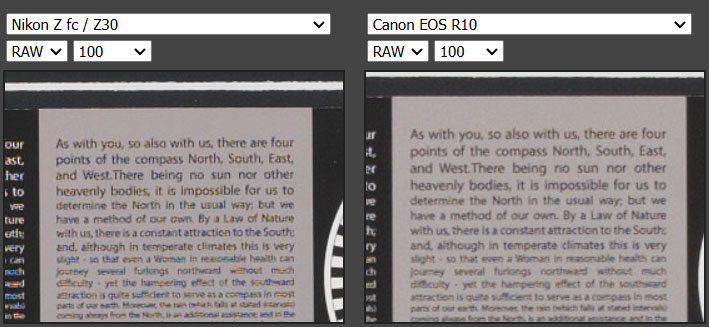
In the JPEG Mode, the performance of the Canon R10 Camera is much improved which may be due to JPEG filters the Nikon Z30 sample at base ISO losing a bit of details which was visible in the RAW Mode.
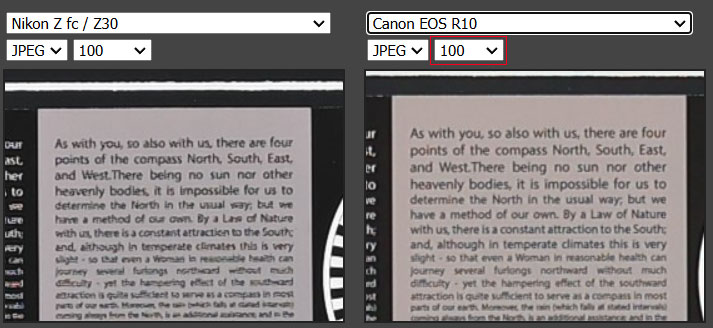
Verdict / Conclusion Image Quality
In terms of image quality, the Nikon Z50 II performs better than the Canon R10 at higher ISO settings, particularly when shooting in RAW mode. The Nikon Z50 II (or Z30) tends to capture more details at higher ISOs due to its 20MP sensor and lack of a low-pass filter, which helps to maintain fine textures.
However, at base ISO, when shooting in JPEG, the Canon R10 may show slightly more detail due to its higher 24MP resolution. But if you’re shooting in RAW at base ISO, the Nikon cameras can still provide a slightly clearer picture due to the low-pass-less design, which can enhance sharpness. Overall, for detail preservation, the Nikon Z50 II’s 20MP sensor has a slight edge, especially for those who prioritize high ISO performance and RAW shooting.
Support us – Use or affiliate link Amazon.com | B&H Store for the next purchase u make – it helps us
Follow us on our social pages FACEBOOK | TWITTER | INSTAGRAM to get live Camera News +
By admin, on November 9th, 2024
Nikon Z50 Mark II camera features the same sensor we’ve seen in other Nikon APS-C cameras, but it’s worth noting that it now has Picture Control support, custom profiles are now helping the low-light sensor to extract more and more details and better color contrast during the time of shoot, a clear example is shown below
Get a Nikon Z50 Mark II camera from the B&H Store | Amazon.com
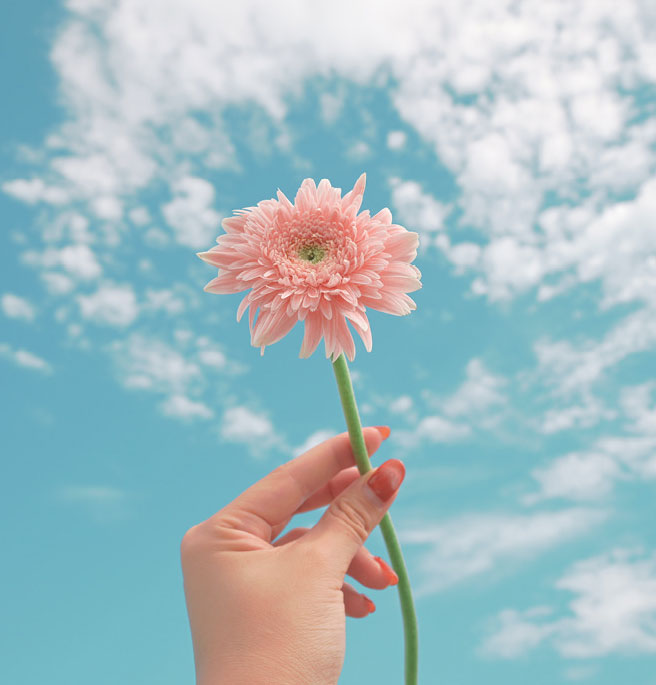
Not only that, but the sharpness the Nikon Z50 II provides with its low-pass-less architecture is impressive, as you can see in the camera’s phenomenal circular resolving capacity in the next image.
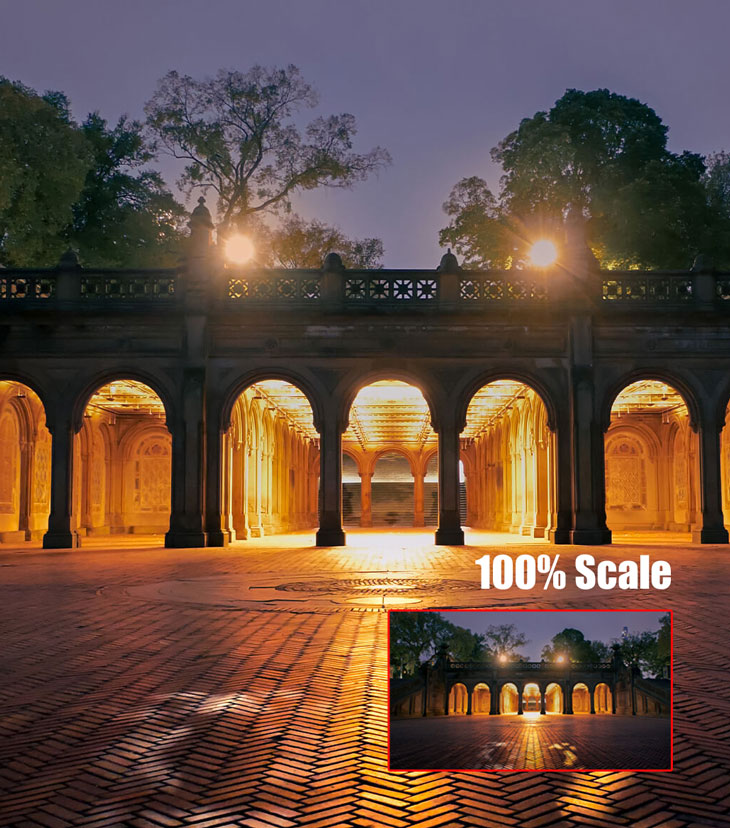
Of course, those who love high resolution may be disappointed with this release, but again… for those who love to capture images and videos in an un-controlled light environment it’s a great camera for them
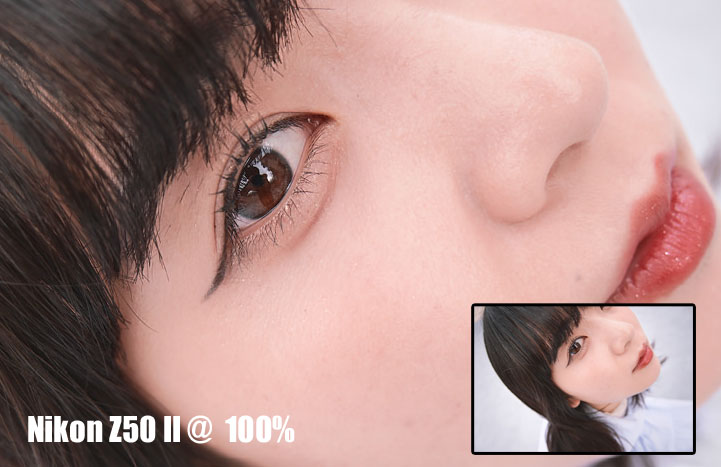
Follow us on our social pages FACEBOOK | TWITTER | INSTAGRAM to get live Camera News + Nikon Rumors 24X7
By admin, on November 7th, 2024
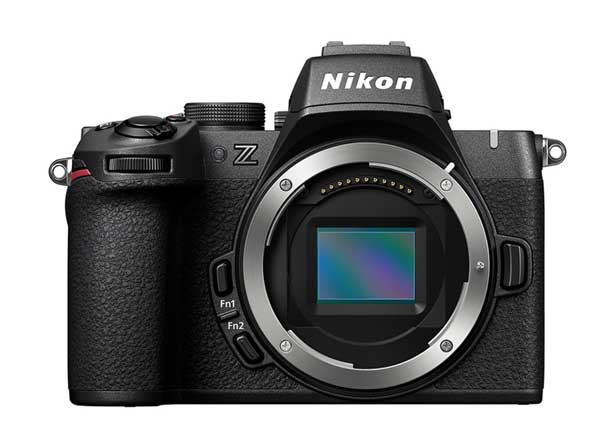
Nikon announced the long-awaited Nikon Z50 Mark II camera. If we talk about body design, we have a much-improved hand grip, which reminds us of DSLR cameras; they are very deep and very comfortable for professional hands. The other noticeable thing is a bright viewfinder of 1000 nits, despite having a 2.36 million resolution. Nikon has scaled the EVF. The other major improvement we can say in the design is the introduction of a vari-angle display screen on the rear side of the camera. As you can clearly remember, the Z50 had a tilting display screen, and now with the arrival of a vari-angle display as well as an additional audio port on the side of the camera, content creators can monitor their audio while recording videos.
Get a Nikon Z50 Mark II camera from the B&H Store | Amazon.com – Est. Ship Date: Thu Nov 21, 2024
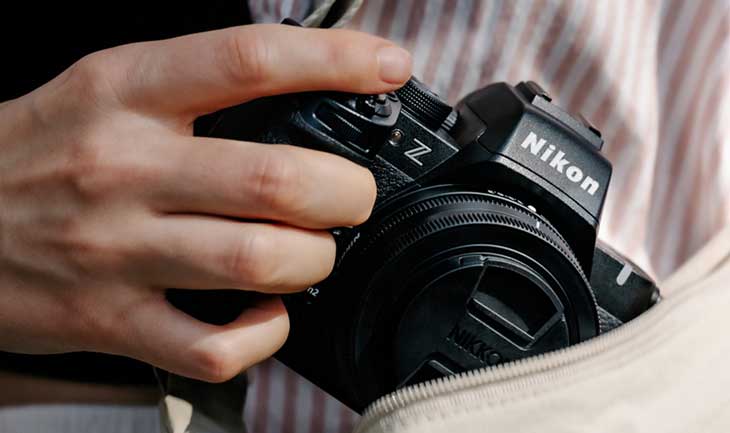
Overall Design Improvements
Overall, the camera is much improved compared to its predecessor. When we compare the designs, we see that we have a few extra controls and a newly added picture control button on top of the camera. The other noticeable advantage we have is the introduction of the EN-EL25a battery. Although it is very similar to the battery we have seen (EN-EL15) in the Z50, it has also been redesigned to run more efficiently.
Core Specifications
Now let’s talk about the internal core specifications of the camera. We have the same 20-megapixel sensor in the Nikon Z50 Mark II camera paired with the latest Expeed 7 image processor. Many users out there are disappointed with the resolution of the camera since it is the same sensor we have seen in the D500, Z30, and ZFC. All these cameras have the same, but the most interesting part of this particular sensor is its low-light performance, similar or even better to the recent current generation of higher-end APS-C cameras.

Resolution and Low-Light Performance
That said, resolution may be a completely personal choice, but having an excellent low-light-performing BSI CMOS sensor under a $1,000 budget is really impressive. I love to see the same sensor again in the Z50 Mark II body.
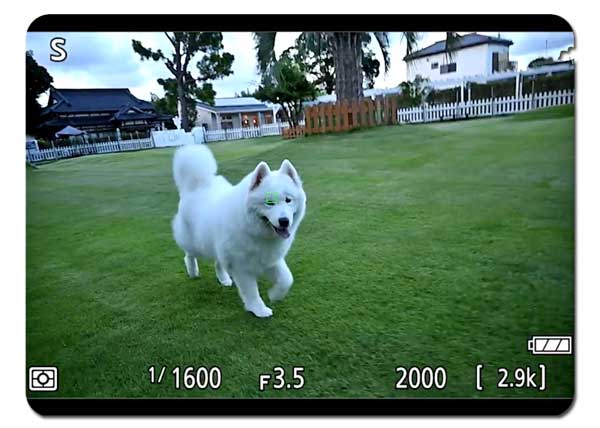
Advanced Autofocus
Now, with the introduction of the Expeed 7 image processor, we have an advanced autofocus algorithm inside the Z50 Mark II camera, which comes directly from the Nikon Z6 III and Nikon Z8 bodies. But kindly remember that Nikon’s higher-end cameras, or even the Nikon Z6 Mark III, have a partially stacked sensor, whereas the Z50 II does not have that. So the response of the AF algorithm present inside those cameras acts differently. But again, having advanced AF algorithms inside the Z50 Mark II camera enhances the autofocusing performance to the next level. The 3D auto-tracking performance keeps tracking the subject regardless of the subject or the camera movement. The other big advantage we have is the introduction of 9 different types of autofocus tracking modes. So, if we talk about the autofocus performance, the Z50 Mark II has now become one of the most advanced Nikon APS-C cameras Nikon ever announced.
Continuous Shooting Speed
The continuous shooting speed of the camera has been upscaled, and now you can shoot up to 30 frames per second with the electronic shutter. With the mechanical shutter, you can do continuous shooting up to 11 frames per second. We all know that the 20 MP BSI CMOS sensor is not a stacked CMOS sensor, so those who don’t want any kind of rolling shutter effect can select the mechanical shutter.
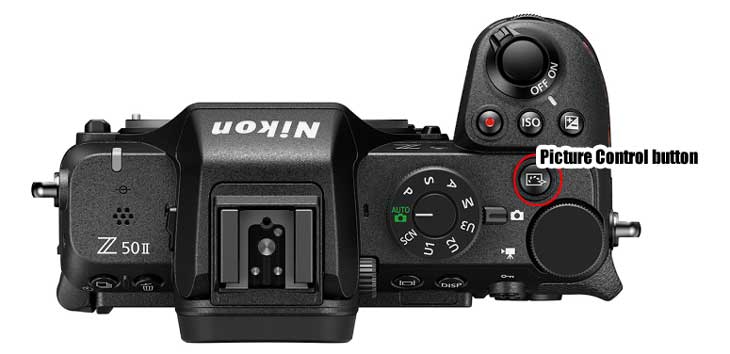
Picture Control / Profile Button and Cloud Integration
Now we have a dedicated picture profile button on the top of the camera, and with this button, you have a world of possibilities. You can browse all the presets and different kinds of picture profiles available to you through Nikon’s cloud system. Once you connect your camera with the NX software, it opens up multiple picture profiles being used by Nikon ambassadors worldwide while shooting images. So you can select any of these picture profiles for your camera and have some fun.
Video Features and Enhancements
Let’s talk about the video part of the camera. Nikon has done a lot for the video side of the camera. Starting from the design, Nikon has introduced a vari-angle display screen and a headphone port to monitor audio. Now, internally with the Expeed 7 image processor, we have an advanced 3D autofocus system for videos.
10-Bit Video Recording and Waveform
The Nikon Z50 Mark II now supports 10-bit video recording. You can record videos in 10-bit format and apply various colour profiles, including some introduced recently in Nikon’s professional cameras. Professionals will love this camera for the introduction of the waveform; now you can see the waveform functionality on the back of the camera, which helps set the exposure for the entire scene more accurately than the histogram.
Image Stabilization Drawbacks
The only thing that disappoints me is the presence of electronic image stabilization, which is not very effective in the Z50 Mark II. With VR lenses, you can achieve some stability, but it is not as good as we have seen in the Sony ZV-E10 or ZV-E10 Mark II cameras.
Here’s a straightforward table summarizing the pros and cons of the Nikon Z50 II:

Conclusion / Early Verdict
| Pros |
Cons |
| Improved Grip Design: Deep, DSLR-style grip for comfortable handling. |
Electronic Image Stabilization (EIS) Limitation: EIS is present but not as effective as IBIS or advanced stabilization systems in other brands. |
| High-Quality Vari-Angle Display: Versatile screen for flexible shooting angles, great for vlogging. |
Same 20 MP Sensor: Uses the same 20 MP sensor as its predecessor, which may disappoint users looking for higher resolution. |
| Advanced Autofocus with 3D Tracking: Enhanced AF algorithms with 9 AF tracking modes and better 3D tracking from Expeed 7 processor. |
No Significant Increase in Frame Rate for Mechanical Shutter: Mechanical shutter limited to 11 fps, which may fall short for some action photographers. |
| 10-Bit Internal Video Recording: Adds professional video quality options with 10-bit color profiles. |
|
| Enhanced Low-Light Performance: BSI CMOS sensor provides strong low-light capability for the APS-C segment. |
|
| Dedicated Picture Profile Button: Conveniently browse and apply custom profiles from Nikon’s cloud library. |
|
| Improved Battery Efficiency: Redesigned EN-EL25a battery for better performance compared to the previous Z50. |
|
|
KEEP THIS BLOG ALIVE - Support New Camera Buy Canon Lenses, Buy Music CD or Digital Camera at amazon it helps this site, and you do not pay anything extra, it is just a way to help support this site.

|








































